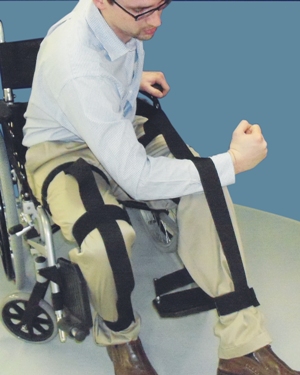- Providing Helpful Healthcare Products Since 1999 | Our Hours: 8 AM - 5 PM CST Mon - Fri
- +1-877-750-0376
Understanding Wheelchair, Scooter, and Walker Assistive Devices
Caregiver Mobility Aids
September 1, 2011Toilet Aids: Have a Great Time in Your Washroom
September 19, 2011
Unless you use a wheelchair or walker, it’s often hard to understand what they’re all about. Yes, they function as a mobility device to take a person from place to place. But they’re far more than just that.
For people who need them, wheelchairs and walkers become very much an extension of their body. After all, there was a time when they could walk down the sidewalk or go across the street with ease–and with no help. Now, these people do the same task, but with the help of these aids. So, these are very personal devices, and often these devices require some adaptation to make them even more individualized.
Wheelchairs and walkers usually are delivered in “stock” condition. That is, with few bells and whistles and little accommodation for comfort. Users can greatly increase their level of comfort by adding pads on walker handles and wheelchair rims. Pads are available for the seat and cushion, too. (Note: even crutch users can purchase soft gel pads for the forearm, hand, and underarm areas).
While comfort is always a priority, functionality is another important issue. Most wheelchairs and walkers are not functional enough for most users’ everyday needs. But wheelchairs and walkers can become functional by the addition of things like attachable carry-all pouches. Folks who use both scooters and walkers can become “hybrid” users by employing a clever device called a walker holder that attaches to the back off the scooter.
Safety is the third issue. Nearly all wheelchairs, scooters, and walkers are engineered within a certain set of safety limitations. But users can increase the safety in a number of different ways. One way is to add a brake lever extension. Brakes are the one way to ensure that the wheelchair will not roll away. Yet some people may avoid using the brakes because of limited hand and arm strength. Cupholders are another safety device. Hot liquids carried on a wheelchair or scooter user’s lap is highly dangerous. Cupholders free the hands to do what they should be doing: controlling the wheelchair or scooter. In fact, there are even cupholders for walkers.
Safety isn’t just the concern of the person using the wheelchair, walker, or scooter. You, as a caregiver, no doubt realize that safety is important–and often difficult to maintain. To help you out, there are many devices, one of which is called the casbar to allow you to push the wheelchair with one hand while going in or out of doors. Does your patient, spouse, or parent have an arm or leg involuntarily “fall off” of the chair? Arm and leg supports can help keep limbs in. Side and wing
back supports are also safety devices that keep the person’s torso snugly within the safe confines of the chair.
